Finsbury Central (UK Parliament constituency)
Finsbury Central was a parliamentary constituency that covered the Clerkenwell district of Central London. It returned one Member of Parliament (MP) to the House of Commons of the Parliament of the United Kingdom, elected by the first past the post system.
| Finsbury Central | |
|---|---|
| Former Borough constituency for the House of Commons | |
| 1885–1918 | |
| Number of members | one |
| Replaced by | Finsbury |
| Created from | Finsbury |
History
The constituency was created when the two-member Finsbury constituency was divided by the Redistribution of Seats Act 1885 for the 1885 general election. It was abolished for the 1918 general election, when it was replaced by a new single-member Finsbury constituency.
Boundaries

The constituency was created, in 1885, as a division of the parliamentary borough of Finsbury, in the historic county of Middlesex to the north of the City of London. The Redistribution of Seats Act 1885 provided that the constituency was to consist of the parish of St James and St John, Clerkenwell.[1]
The seat was mostly located in the Clerkenwell district, with a detached portion at Muswell Hill containing about 5% of the population. The two areas were connected for historic reasons. The Social Geography of British Elections 1885-1910, explains that the Knights of St John had once owned more than half of Clerkenwell, including a deer park at Muswell Hill.
In 1889 Clerkenwell was severed from Middlesex to become part of the County of London.
In 1894, when the lower tier of local government in Middlesex was altered, the Muswell Hill area formed part of the Hornsey Urban District, which became the Municipal Borough of Hornsey in 1903.
In 1900 the lower tier of local government in London was rationalised. The old local boards and parish vestries were replaced, in the Clerkenwell area, by the Metropolitan Borough of Finsbury.
The local government changes did not affect the parliamentary boundaries until the redistribution of 1918, when the Central division ceased to be a separate constituency.
Members of Parliament
| Year | Member | Party | |
|---|---|---|---|
| 1885 | Howard Spensley | Liberal | |
| 1886 | Frederick Penton | Conservative | |
| 1892 | Dadabhai Naoroji | Liberal | |
| 1895 | William Massey-Mainwaring | Conservative | |
| 1906 | W. C. Steadman | Liberal | |
| 1910 | Martin Archer-Shee | Conservative | |
| 1918 | constituency abolished: see Finsbury | ||
Election results
Elections in the 1880s
| Party | Candidate | Votes | % | ± | |
|---|---|---|---|---|---|
| Liberal | Howard Spensley | 2,861 | 55.3 | N/A | |
| Conservative | Saul Isaac | 2,314 | 44.7 | N/A | |
| Majority | 547 | 10.6 | N/A | ||
| Turnout | 5,175 | 69.4 | N/A | ||
| Registered electors | 7,462 | ||||
| Liberal win (new seat) | |||||
| Party | Candidate | Votes | % | ± | |
|---|---|---|---|---|---|
| Conservative | Frederick Penton | 2,245 | 50.1 | +5.4 | |
| Liberal | Howard Spensley | 2,240 | 49.9 | -5.4 | |
| Majority | 5 | 0.2 | N/A | ||
| Turnout | 4,485 | 60.1 | -9.3 | ||
| Registered electors | 7,462 | ||||
| Conservative gain from Liberal | Swing | +5.4 | |||
Elections in the 1890s
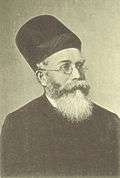
| Party | Candidate | Votes | % | ± | |
|---|---|---|---|---|---|
| Liberal | Dadabhai Naoroji | 2,961 | 50.0 | +0.1 | |
| Conservative | Frederick Penton | 2,956 | 50.0 | -0.1 | |
| Majority | 5 | 0.0 | N/A | ||
| Turnout | 5,917 | 71.2 | +11.1 | ||
| Registered electors | 8,311 | ||||
| Liberal gain from Conservative | Swing | +0.1 | |||
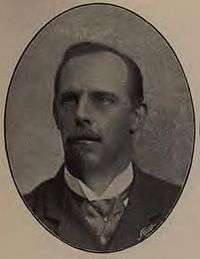
| Party | Candidate | Votes | % | ± | |
|---|---|---|---|---|---|
| Conservative | William Massey-Mainwaring | 3,588 | 56.3 | +6.3 | |
| Liberal | Dadabhai Naoroji | 2,783 | 43.7 | -6.3 | |
| Majority | 805 | 12.6 | N/A | ||
| Turnout | 6,371 | 71.5 | +0.3 | ||
| Registered electors | 8,911 | ||||
| Conservative gain from Liberal | Swing | +6.3 | |||
Elections in the 1900s
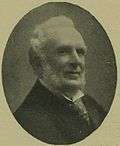
| Party | Candidate | Votes | % | ± | |
|---|---|---|---|---|---|
| Conservative | William Massey-Mainwaring | 2,872 | 53.2 | −3.1 | |
| Liberal | Joseph Benson | 2,523 | 46.8 | +3.1 | |
| Majority | 349 | 6.4 | −6.2 | ||
| Turnout | 5,395 | 63.3 | −8.2 | ||
| Registered electors | 8,523 | ||||
| Conservative hold | Swing | −3.1 | |||
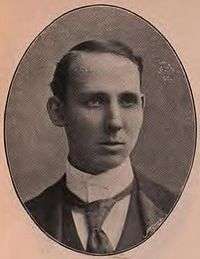
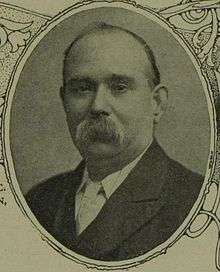
| Party | Candidate | Votes | % | ± | |
|---|---|---|---|---|---|
| Lib-Lab | W. C. Steadman | 3,493 | 55.5 | +8.7 | |
| Conservative | Edward Goulding | 2,799 | 44.5 | −8.7 | |
| Majority | 694 | 11.0 | N/A | ||
| Turnout | 6,292 | 76.0 | +12.7 | ||
| Registered electors | 8,279 | ||||
| Lib-Lab gain from Conservative | Swing | +8.7 | |||
Elections in the 1910s
| Party | Candidate | Votes | % | ± | |
|---|---|---|---|---|---|
| Conservative | Martin Archer-Shee | 3,559 | 52.8 | +8.3 | |
| Lib-Lab | W. C. Steadman | 3,187 | 47.2 | -8.3 | |
| Majority | 372 | 5.6 | 16.6 | ||
| Turnout | 6,746 | 83.3 | +7.3 | ||
| Conservative gain from Lib-Lab | Swing | +8.3 | |||
| Party | Candidate | Votes | % | ± | |
|---|---|---|---|---|---|
| Conservative | Martin Archer-Shee | 3,335 | 54.3 | +1.5 | |
| Liberal | Felix Rosenheim | 2,804 | 45.7 | -1.5 | |
| Majority | 531 | 8.6 | +3.0 | ||
| Turnout | 6,139 | 75.8 | -7.5 | ||
| Conservative hold | Swing | +1.5 | |||
References
- Redistribution of Seats Act 1885, Sixth Schedule
- British Parliamentary Election Results 1885-1918, FWS Craig
- Boundaries of Parliamentary Constituencies 1885-1972, compiled and edited by F.W.S. Craig (Parliamentary Reference Publications 1972)
- British Parliamentary Election Results 1885-1918, compiled and edited by F.W.S. Craig (Macmillan Press 1974)
- Social Geography of British Elections 1885-1910. by Henry Pelling (Macmillan 1967)
- Leigh Rayment's Historical List of MPs – Constituencies beginning with "F"